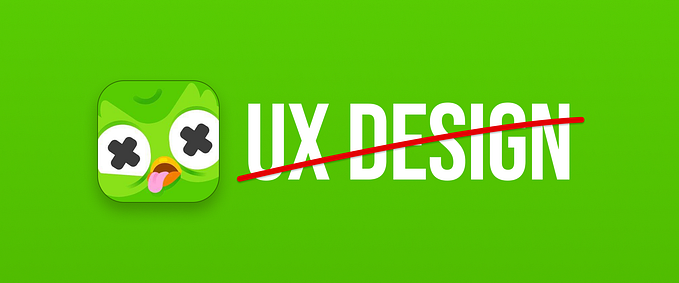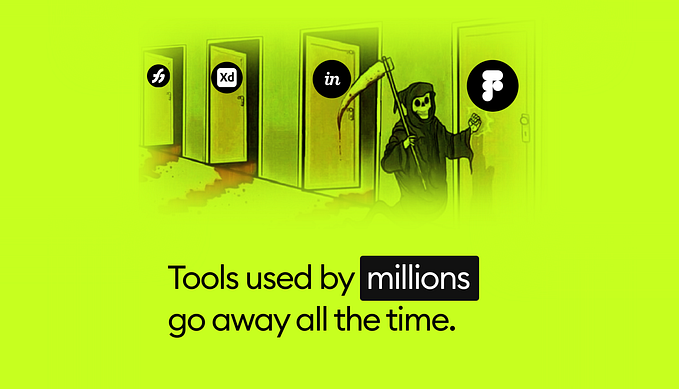FULAH — Where Sustainability Meets Fashion

In this case study, I have designed a solution towards sustainability in fashion through utilising rental apparel and augmented reality through my high end retailer brand Fulah. Product duration was 2 weeks.
I took on the role of a User Researcher and UI Designer.
The problem
The $3.5 trillion fashion industry is one of the largest business sectors in the world. It is also one of the most wasteful producing 20% of global water waste and 10% of carbon emissions.
3/5 of all clothing produced ends up in incinerators or landfills within a few years of being manufactured and the equivalent of one rubbish truck of textiles is landfilled or burned every second.
While clothes are an everyday necessity and a form of personal expression, current textile waste far outweighs the benefit. There is greater concern for sustainability in the fashion industry today.
Double Diamond
The strategy used for this design task is the Double Diamond process.

Red Route Analysis
I gathered commonly used functions to prominently use for my own design. In accordance to Jacobs Law it would be wise to not try and create my own functions but rather adopt what is already there, this is because
“Users will transfer expectations they have built around one familiar product to another that appears similar.”
and -
“By leveraging existing mental models, we can create superior user experiences in which the users can focus on their tasks rather than on learning new models.”

Business Research
Below I have created a table cross analysing the strengths and weaknesses of the following companies; HireStreet, ASOS, PrettyLittleThing and IKEA Product.

Evaluation of Research
All these apps came with similar functions
- shopping experience
- existed for around 5 years minimum
- UK presence
- green CTA to purchase
- enlarged product photos on landing page
- 60:30:10m colour theme
- favourites/basket/profile icon, in the same area
- integrated online reviews
Negative reviews
- some are primarily on web, or an app
- colours are inaccessible to read
- basket/likes clearing randomly
- unclear T&C’s
UPS
- rental purchase button
- rollover images of customers wearing clothing
- uses augmented reality
App Reviews Overview

According to the Apple Store ASOS count up to 1.6M ratings, being the largest of the four, with a positive rating of 4.8 out of 5 stars. The reviews for ASOS are vastly positive, most if not all are reviews even relating to the UI/UX of the app. I’ve speculated some comments on functions users have found on other apps that they would like on the app but regardless of this input their ratings remain high allowing me to understand that they are overall satisfied with their experience.

PrettyLittleThing app has a lot to give with 32.2K reviews, with an overall rating of 4.8 out of 5 stars on the Apple Store. Though the app has a lot of positive ratings a lot if not most of the users complain about the Wishlist and shopping cart usability, with their items not being visible after a time period making the experience more irritable as they can’t keep track on what to buy. Reading the comments has shown me that branding and overall experience will produce good ratings. Some users are rating the website & brand itself rather then solely the app experience making the app reviews unreliable.

Hirestreet do not have a app, but have a website so I sorted reviews from Trustpilot. There’s minimal reviews that focus on the UI of the webpage, but ones that were recurring was the misinformation of the T&C’s which could be an UI or just technical error in house. Whether it’s for it to have a larger place to be seen on the screen, or it to be made bold/clearer to understand like in laymen terms that still follow the legal agreements between the customer and company.

IKEA Place is the youngest of apps compared to the rest, holding around 5.6K reviews and having an overall rating of 4.6 out of 5 stars on the Apple Store.
User Research
Rentable items allow the same pieces to be worn by many people. This reduces the amount of waste that happens in the production of items. A vast amount of energy is needed within the production of clothing, from the overseas shipping, storing, transport, with a large amount of emissions.
Fulah allows users to rent or buy designer clothes and accessories, vastly cutting the production of these items.
In the UK, the ecommerce annual revenue totals to over $120 billion. Due to Covid-19 there was a soaring rise to the usage of online shopping, with most items being clothing, gardening and house furniture. Covid-19 changed the entire dialogue for UK e-commerce, with shops closing down (Debenhams) and some rising with only having an online presence (Shein).


Interactive functions like watching your Amazon parcel getting delivered to you in real time made the wait, or even the user experience, more dopamine filled; that something on your screen will be at your doorstep all by sitting at the luxury of your own house. Bolt do this too with you being able to virtually see yourself and the travel time as an interaction on your lock screen. There is a competitive advantage with personalising a shopping experience for a user.
According to Google “40% of shoppers will spend more time than planned — if a shopping experience seems highly personalised.”
Fulah will allow users to rent or buy designer clothes and accessories. To further cut emissions the use of AR would be to help cut the comfortability users have with buying in bulk and returning items. Trying clothes virtually also saves the users time traveling and trying on in person.
Augmented reality is a further enhancement of the real world, that responds to what is captured through a camera in real time.
“Forbes reported that AR technology convinces up to 200% of customers to make more purchases after they ‘test’ products with AR”
Statistics reported say the percentage of a return rate after using AR for their users shopping experience had dropped by 30%.

“The app helps increase user engagement rates by providing features that grant consumers the ability to accurately measure room dimensions (with a report of 98% accuracy) and visualize how light and shadows impact the exact textures of furniture.”
User Persona
Following from my user research, I created a user persona to insure my design as a user-focused solution.

Ideation
Having a mind map allowed me to visualise my work flow. The flowchart shows the manoeuvring between the browsing page, product page and AR page.

Card Sorting

In deciding which design fits best with my aim and eye, I’ll be wireframing. This is normally addressed in 3 parts, low, mid and high wireframing. These all increasing in detail, colour and labelling.
Low fidelity drawing


Mid-fidelity stage


High-fidelity stage


Final Interfaces






Design laws & Design guide
Law of Proximity
The three carousels found on the main page will direct the user to perceive the page in it’s different sections. “The law of proximity describes how the human eye perceives connections between visual elements. Elements that are close to each other are perceived to be related when compared with elements that are separate from each other”. This is further seen on my product page where the singular item has scrollable images lined up together.
60:30:10
The 60:30:10 rule is a ratio used to help aid a successful colour theme in whatever artistic project someone has going on. That roughly 60 is be the main colour, 30 the secondary and 10 should be an accent colour. As seen in my designs have allocated the 60:30:10 formula with the colours “white:black:yellow”. Yellow (HEX #EDD038) is the accent colour used sparingly. It holds connotations of happiness and optimism, all relating to the goal at hand of the user buying from an sustainability focused fashion retailer.
Hicks Law
“Hick’s Law states that the more stimuli (or choices) users face, the longer it will take them to make a decision.” This law was reflected upon while in the design stage as I wanted to make sure the user doesn’t feel as if the page is clustered or even make the user frustrated. The main page only showcases two rows of items per scroll, allowing the user to efficiently skim through items.
WCAG
Web content accessibility guidelines are a set of principles that are to help aid accessible internet for every user. Following from colour, sizing with CTA’s and text, they use a graded system “A” “AA” “AAA” with the last two being passes and and triple A being the optimal best. When designing I used these guidelines to ensure all people are able to easily access the application. I used a colour contrast checker plugin on Figma to check and further render my designs to the meet the requirements, which all met the standard of at least double and triple A.



Evaluation
Fulah let’s you rent mid to high end clothes from the most reputable Sustainable Fashion Brands in London. Fulah’s focus is to build a community of women who are passionate to make a change in the Fashion industry. You can decide to keep your items and you can return them when every you are ready to redesign your wardrobe.
I am quite happy with my designs. If permitted more time I would of loved to be able to do more user research to find out how users use ecommerce website. As the User Researcher i would of liked to collect more qualitative data to bring more reasoning to Fulah. A lot of the designing was centred around former successful webpages and secondary research found online which i sourced below.
I also would’ve liked to gather more feedback on how a user finds the journey; specifically how they would navigate around the renting system as it isn’t commonly found on shopping sights. My only direct competitor didn’t have enough reviews for me to gauge how the users felt about the design.
Overall I with the usage of AR and renting system I wouldn’t think to add anything else to its already unique selling point. As a product designer I would work on maintaining the usability and focus on feedback given from users to allow the companies online presence work as efficiently as possible. Fulah only has an online presence; so the way it is to be perceived and function is highly important as that would be it’s sole image.
Links
https://3dlook.me/content-hub/7-sustainable-fashion-technologies/
https://www.bdc.ca/en/articles-tools/marketing-sales-export/marketing/how-evaluate-competition
https://www.nngroup.com/articles/ecommerce-product-pages/
https://www.nngroup.com/articles/augmented-reality-ux/
https://www.statista.com/statistics/1195613/rental-apparel-market-revenue-worldwide/
https://www.ikea.com/au/en/customer-service/mobile-apps/say-hej-to-ikea-place-pub1f8af050
https://hostingdata.co.uk/online-shopping-statistics-uk/
https://www.trade.gov/country-commercial-guides/united-kingdom-ecommerce#:~:text=Internetshopping is more popular,one product online in 2021.






